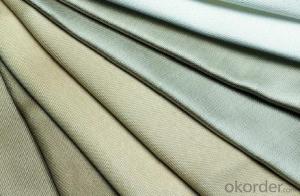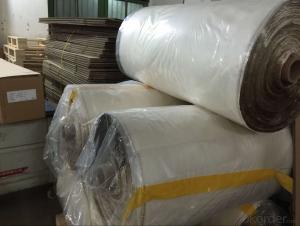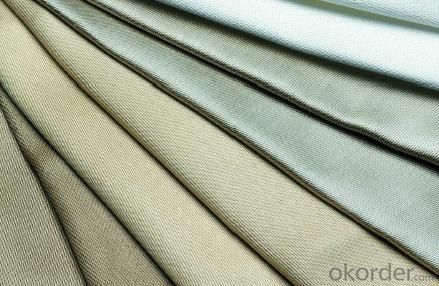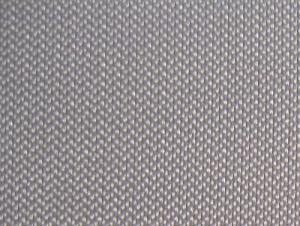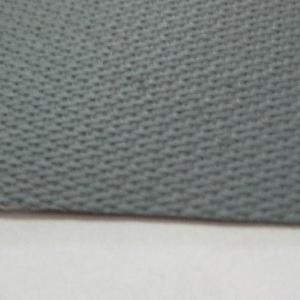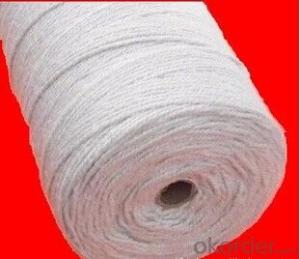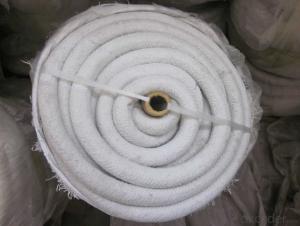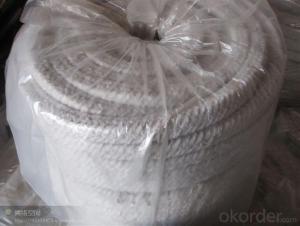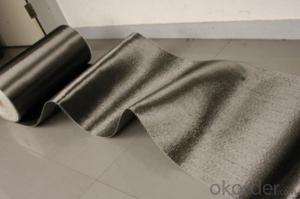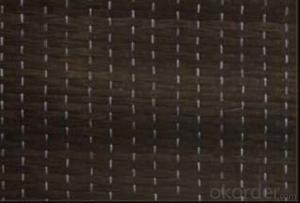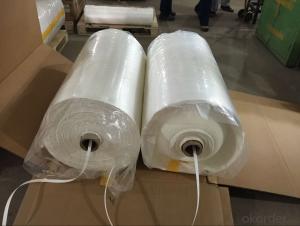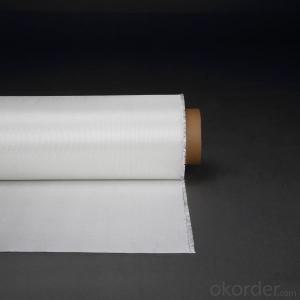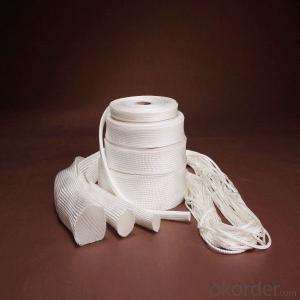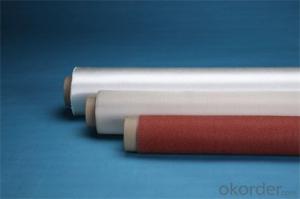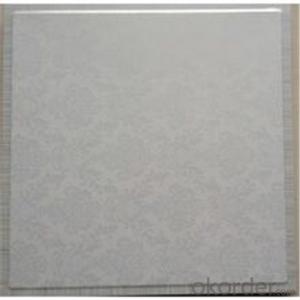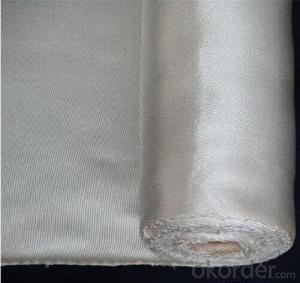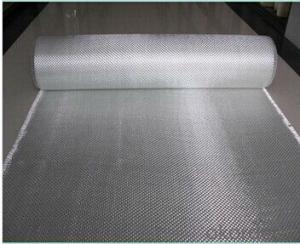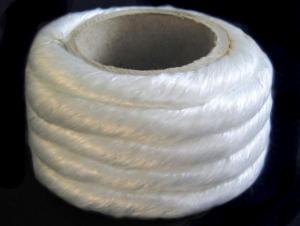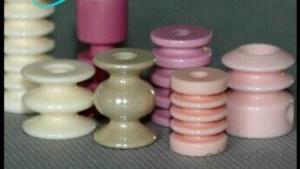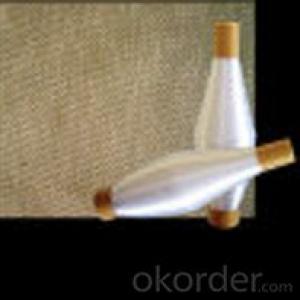Glass Fiber Textiles - 36oz Silica Fiberglass Cloth Resisting 1000°C for Heat Resistance
- Loading Port:
- China main port
- Payment Terms:
- TT OR LC
- Min Order Qty:
- 1000 m
- Supply Capability:
- 100000 m/month
OKorder Service Pledge
OKorder Financial Service
You Might Also Like
Product Description
Silica fiberglass is inorganic fiber that contents more than 96% of SiO2, it's resistant to high temperature, soft point 1700°C, long term service temperature 900 °C, it can work 10 minites at 1450 °C and keeps good state at 1600 °C for 15 seconds. For it's properties of chemical stability, high temperature resistance and ablation resistance, it widely used in aviationand aerospace, metallurgy, chemical, building material and fire fighting industry, etc.
Our factory is the only one that specialized manufacture silica fiberglass in China and has the production line of the whole process from marble making, fiber forming, weaving, and finish. The strength of silica fiberglass made from Na2O-B2O3-SiO2 system glass is 3-5 times higher than that from E glass. The products sold to more than 20 provinces, cities, autonomous regions and exported to foreign countries.
Silica fiberglass products are available in forms of needled mat, fabric, scrim, staple yarn, chopped strand and cord, etc.
Product Properties
1> SiO2>=96%
2> soft point nearly 1700°C, long-time working at 900°C
3> low thermal conductivity
4> good chemical stability
5> good electrical insulation
6> low thermal shrinkage
7> Non-asbestos product without pollution
8> good process performance
Product Uses
High temperature resistant, insulation and sealing material
High temperature ablation resistant material
Fireproof material (for fireproof protective clothe, fireproof curtain, fire blanket)
Dust collecting in media of high temperature gas and filtration in media of high temperature liquid
Filter for molten metal
Distinguisher, insulation material, filtration of automobile and motorcycle
Protective material for welding
Electricity insulation material
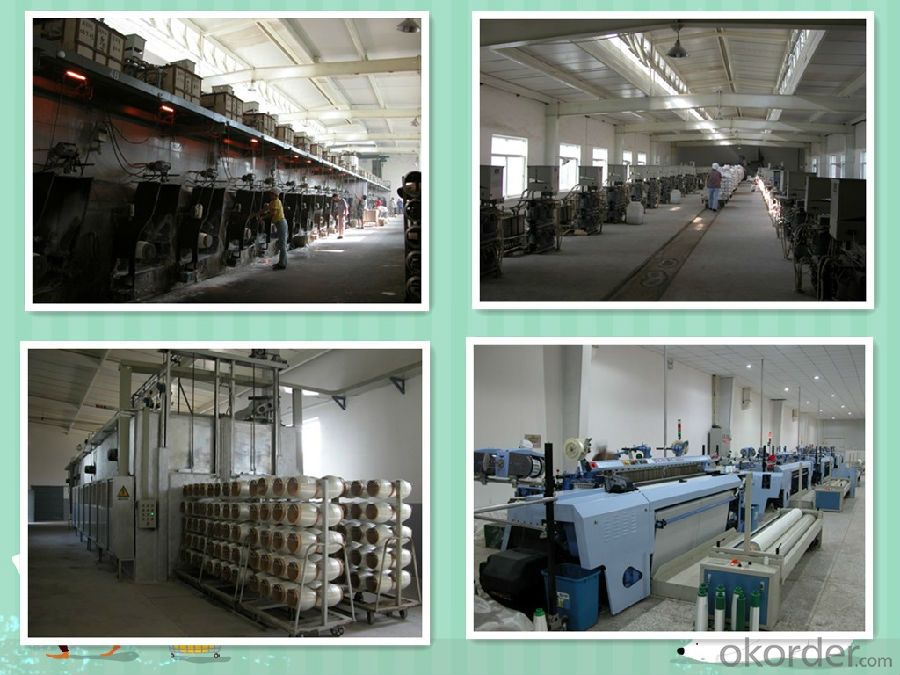
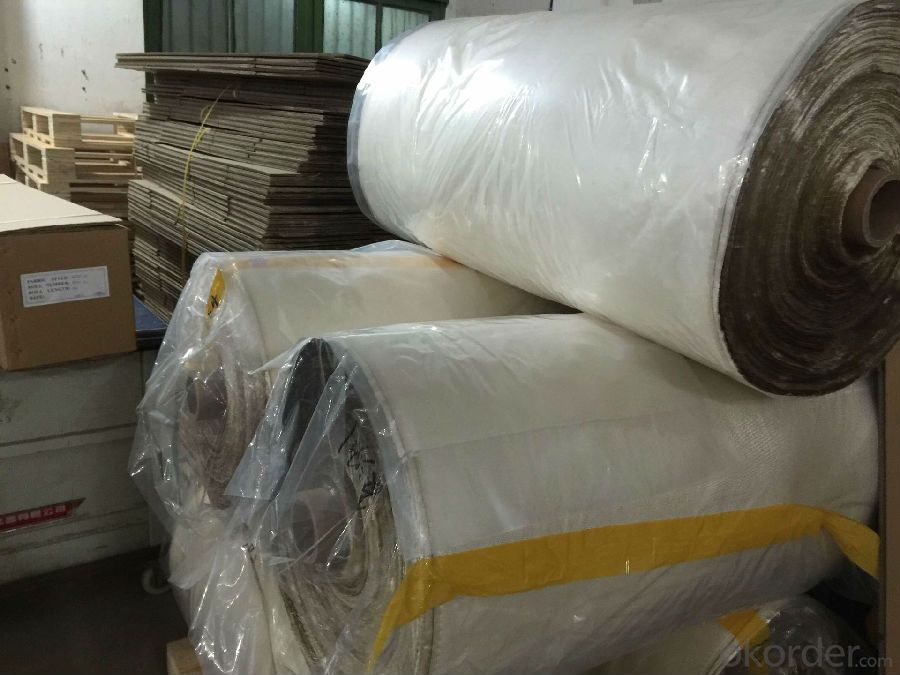
- Q: Can glass fiber textile be used in architectural applications?
- Yes, glass fiber textile can be used in architectural applications. Glass fiber textile, also known as fiberglass, is a versatile material that offers several benefits for architectural use. It is lightweight, strong, durable, and has excellent thermal and acoustic insulation properties. These characteristics make it suitable for various architectural applications, such as cladding, roofing, partition walls, and facades. Glass fiber textile can be used as a reinforcing material in composite panels, providing structural support and enhancing the overall strength of the building. It can also be molded into different shapes and forms, allowing for creative and innovative architectural designs. Furthermore, glass fiber textile is resistant to corrosion, moisture, and UV radiation, making it an ideal material for exterior applications. It can withstand harsh weather conditions and requires minimal maintenance, which is a significant advantage for long-term architectural projects. Additionally, glass fiber textile can enhance energy efficiency in buildings. Its excellent insulation properties help reduce heat transfer, leading to lower energy consumption for heating and cooling. This can contribute to sustainability efforts and reduce overall energy costs. In conclusion, glass fiber textile is a suitable material for architectural applications due to its lightweight, strength, durability, insulation properties, and resistance to corrosion. Its versatility and ability to enhance energy efficiency make it a popular choice for various architectural projects.
- Q: Can glass fiber textile be used in roofing materials?
- Yes, glass fiber textile can be used in roofing materials. Glass fiber textiles, also known as fiberglass, are lightweight and strong. They have excellent resistance to moisture, chemicals, and UV radiation. These properties make them ideal for use in roofing materials, as they can provide insulation, reinforcement, and protection against environmental elements. Fiberglass roofing shingles, tiles, and panels are common applications of glass fiber textiles in the roofing industry. Additionally, the flexibility of fiberglass allows for easy installation and customization to fit different roof shapes and sizes. Overall, glass fiber textile is a versatile and durable material that can effectively be used in roofing materials.
- Q: Can glass fiber textiles be spun?
- Indeed, it is possible to spin glass fiber textiles. The production process involves melting glass and subsequently extruding it through minuscule apertures to yield slender filaments. These filaments can be subsequently intertwined to generate threads, which can then be woven or knitted to fabricate an array of distinct textile items. The act of spinning glass fiber textiles grants them the flexibility and adaptability required for their wide-ranging employment in applications like composite reinforcement, insulation, and filtration.
- Q: Can glass fiber textiles be used in the agriculture industry?
- Yes, glass fiber textiles can be used in the agriculture industry. They have various applications such as greenhouses, shade nets, and crop protection covers. Glass fiber textiles provide durability, strength, and resistance to environmental conditions, making them suitable for agricultural use. They can help enhance crop growth, protect plants from pests and weather elements, and improve overall farming efficiency.
- Q: What are the different bonding methods for glass fiber textile?
- There are several different bonding methods for glass fiber textile, each with its own unique advantages and applications. 1. Adhesive bonding: This method involves using a specific adhesive to bond the glass fibers together. The adhesive is typically applied to the fabric and then cured to create a strong and durable bond. Adhesive bonding is commonly used in applications where flexibility and strength are required, such as in the manufacturing of sports equipment or automotive parts. 2. Heat bonding: Also known as thermal bonding, this method involves using heat to melt the fibers together, creating a solid bond. Heat bonding is often used for joining two or more layers of glass fiber fabric together to create a thicker and stronger material. It is commonly used in the production of laminated glass fiber composites. 3. Stitch bonding: This method involves using stitching or sewing to bond the glass fibers together. A needle and thread are used to sew the fibers together, creating a strong and durable bond. Stitch bonding is often used in applications where flexibility and breathability are important, such as in the manufacturing of clothing or upholstery. 4. Weaving: This method involves interlacing the glass fibers together to create a fabric. The fibers are woven using a loom, where they are crossed over and under each other to form a stable structure. Weaving is commonly used in the production of glass fiber textiles, such as fiberglass cloth or fiberglass tape. 5. Knitting: This method involves interlocking loops of glass fibers to create a fabric. Knitting machines or hand knitting needles are used to create the loops, which are then secured together to form a cohesive fabric. Knitting is often used in the production of glass fiber garments or accessories, as it provides a stretchy and comfortable material. Overall, the choice of bonding method for glass fiber textile depends on the specific requirements of the application, such as strength, flexibility, or breathability. Each method has its own advantages and limitations, and manufacturers will choose the most suitable method based on the desired properties of the final product.
- Q: Can glass fiber textile be used in fire blankets?
- Glass fiber textiles have the ability to be utilized in fire blankets. These textiles possess outstanding fire-resistant characteristics, rendering them a perfect material for fire blankets. By intertwining the glass fibers, a resilient and long-lasting fabric is created, capable of enduring high temperatures. By employing a fire blanket composed of glass fiber textile, it becomes possible to effectively extinguish minor fires by depriving them of oxygen and halting the propagation of flames. Furthermore, the glass fiber textile bestows insulation, safeguarding the user from heat and burns. Consequently, due to their fire-resistant properties, glass fiber textiles are a fitting selection for fire blankets.
- Q: How do glass fiber textiles perform in terms of sound insulation?
- Glass fiber textiles are excellent at sound insulation. They have high sound absorption properties due to their porous structure and ability to trap sound waves. When used as insulation material, glass fiber textiles can effectively reduce noise transmission, providing a quieter and more comfortable environment.
- Q: How do glass fiber textiles perform in terms of dimensional stability?
- Glass fiber textiles are renowned for their remarkable dimensional stability. This quality implies that they remain unaffected by external forces or environmental conditions, maintaining their size and shape. The composition of glass fibers, created by drawing molten glass into thin strands, grants them inherent strength and rigidity. Consequently, glass fiber textiles withstand extreme temperatures, moisture, and mechanical stress without losing their form or size. The low thermal expansion coefficient of glass fiber textiles contributes to their dimensional stability. This indicates that they do not significantly expand or contract when exposed to heat or cold, making them ideal for applications requiring precise dimensions. Furthermore, glass fibers possess high tensile strength, enabling them to resist stretching or elongation when subjected to pulling forces. This characteristic further enhances their dimensional stability. Glass fiber textiles also possess excellent resistance to moisture absorption, preventing swelling or shrinkage when exposed to humidity or water. This quality proves particularly crucial in applications where dimensional accuracy is paramount, such as in the construction of composite materials or reinforcement in structures. Overall, glass fiber textiles exhibit exceptional dimensional stability, positioning them as the preferred choice in industries like aerospace, automotive, construction, and marine. Their ability to maintain their size and shape under diverse conditions ensures dependable performance and longevity in demanding applications.
- Q: How does glass fiber textile perform in terms of water absorption?
- Glass fiber textile has extremely low water absorption properties. It is highly resistant to water absorption, meaning it does not retain or hold significant amounts of water.
- Q: Can glass fiber textile be used in tents and awnings?
- Certainly! Tents and awnings can indeed utilize glass fiber textile. This material, being both lightweight and durable, possesses exceptional strength and resilience against severe weather conditions. Moreover, it displays resistance to UV rays, rendering it ideal for outdoor purposes. Often employed as reinforcement in tent and awning construction, glass fiber textiles enhance stability and structural integrity, enabling these shelters to withstand strong winds and heavy rain. In addition, they are effortless to clean and maintain, boasting a lengthy lifespan, which accounts for their popularity in outdoor shelters.
Send your message to us
Glass Fiber Textiles - 36oz Silica Fiberglass Cloth Resisting 1000°C for Heat Resistance
- Loading Port:
- China main port
- Payment Terms:
- TT OR LC
- Min Order Qty:
- 1000 m
- Supply Capability:
- 100000 m/month
OKorder Service Pledge
OKorder Financial Service
Similar products
Hot products
Hot Searches
